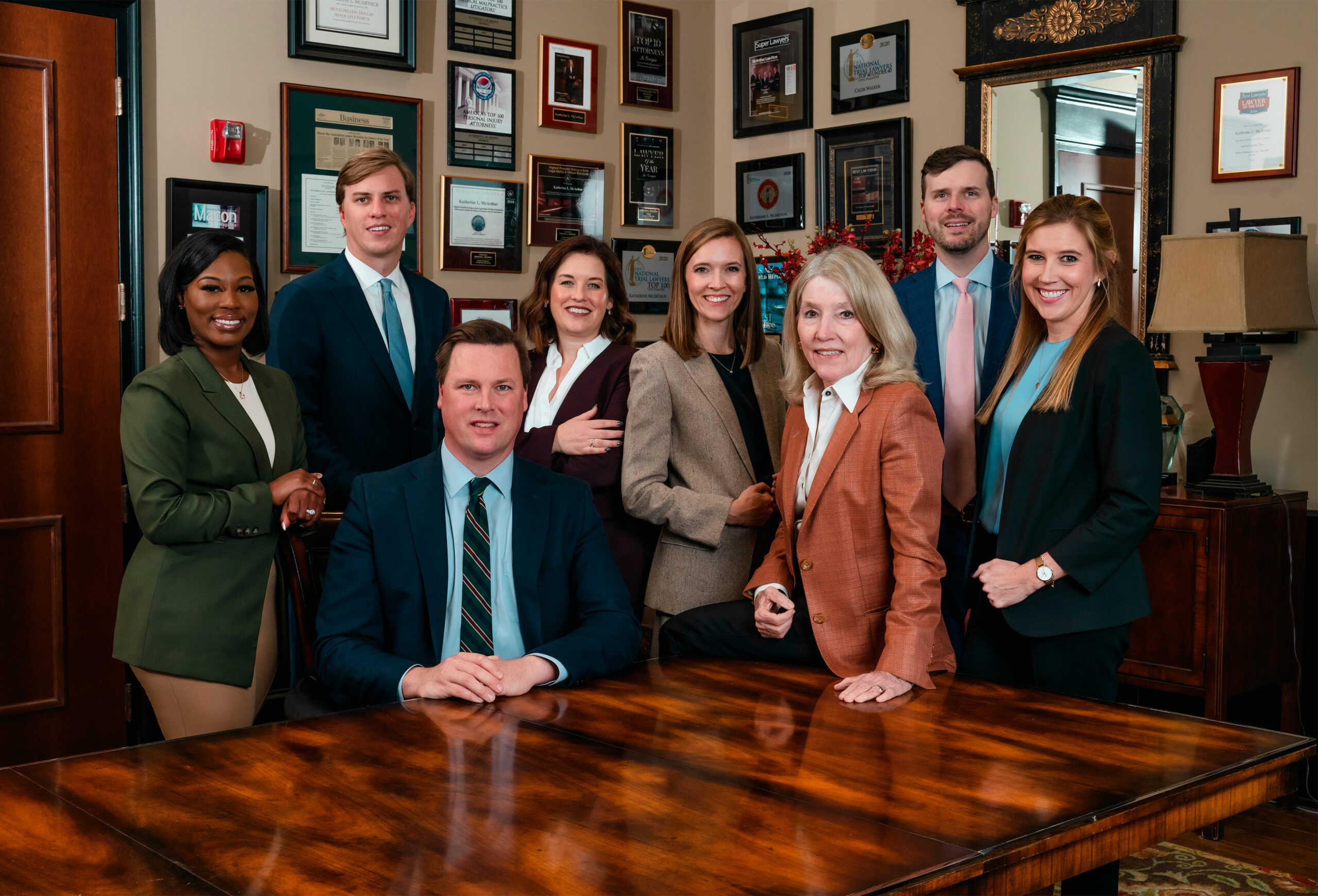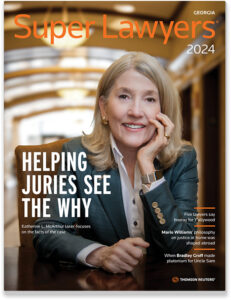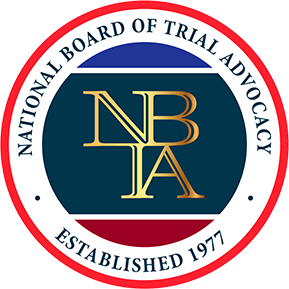Broken bones are among the most common — and most disruptive — injuries seen in personal injury cases across Georgia. Whether the result of a vehicle collision, a fall on hazardous property, or an accident at work, a bone fracture can significantly impact a person’s ability to function in everyday life. Recovery may require surgery, extensive physical therapy, and time away from employment. Some fractures lead to permanent impairment. These are not minor injuries, and they should never be treated as such in a legal claim.
Georgia Broken Bone / Bone Fracture Attorney
When a fracture occurs because another person or business failed to act responsibly, Georgia law provides a path to hold them legally and financially accountable. At McArthur Law Firm, our attorneys have represented individuals and families across Georgia — including in Macon, Atlanta, and Warner Robins — who have suffered serious orthopedic injuries due to negligence.
McArthur Law Firm serves Fulton County, Bibb County and Fulton County, as well as Clayton County, Cherokee County, Forsyth County, and other counties in Georgia. For more information about the McArthur Law Firm or to set up a free consultation to learn what we may be able to do to help you with your personal injury case, give us a call at one of our offices in Georgia or fill out our online contact form.
- Atlanta Office: 404-565-1621
- Macon Office: 478-238-6600
- Warner Robins: 478-551-9901
Overview of Broken Bone Accidents in Georgia
- Types of Broken Bones
- Health Issues from Broken Bones
- Who Is Legally Responsible
- Frequently Asked Questions
- Additional Resources
Types of Broken Bones / Fractures in Georgia Accidents
Simple (Closed) Fractures — A bone that breaks but doesn’t poke through the skin is categorized this way. It’s one of the most common types of broken bones in Georgia. Even though the skin stays intact, the break can still be serious, especially if it’s in a weight-bearing bone like the leg or hip. Recovery usually involves a cast or splint and several weeks of rest.
Compound (Open) Fractures — This kind of break occurs when the bone breaks through the skin. It carries a high risk of infection and usually needs surgery. Victims often face longer healing times and higher medical bills. These injuries often happen in car crashes, falls from heights, or accidents involving heavy equipment.
Comminuted Fractures — When the bone shatters into three or more pieces, it’s considered this type of fracture. These are often seen in high-speed car or truck accidents. The treatment may require metal rods, screws, or plates, and the recovery can be long and painful. In some cases, permanent disability is possible.
Greenstick Fractures — Seen most often in children, this type of fracture occurs when the bone bends and cracks but doesn’t break all the way through. Kids have more flexible bones, which makes this kind of fracture more likely when they fall. These injuries often occur on playgrounds, at schools, or in daycare settings.
Hairline (Stress) Fractures — Tiny cracks in the bone like these are often caused by repeated stress or overuse. Athletes, military trainees, and workers who stand or walk a lot are at higher risk. These breaks can be hard to diagnose at first and may get worse if ignored.
Transverse, Oblique, and Spiral Fractures — The angle of the break determines these classifications. A transverse fracture is a straight horizontal line across the bone. An oblique fracture is a slanted break. A spiral fracture twists around the bone, often caused by a rotating force like in machinery accidents or twisting falls. All three can lead to serious complications, especially if misdiagnosed.
Compression Fractures — These injuries usually affect the spine when too much pressure crushes part of a vertebra. They are more common in older adults, especially those with osteoporosis, but they also occur in falls or car wrecks. Spinal fractures can cause lasting pain and nerve issues.
Avulsion Fractures — This occurs when a tendon or ligament pulls off a piece of the bone. The injury often happens in sports or sudden trauma situations. It can be painful and sometimes requires surgery to reattach the bone fragment.
Growth Plate Fractures — Children and teens can suffer these injuries, which are serious because they can affect how a bone grows. The growth plates are areas of developing tissue at the end of long bones. If the injury isn’t treated right, it can lead to long-term problems.
Health Issues Caused by Broken Bones
Permanent Nerve Damage — Nerve damage can result when the fracture is near the spine, shoulder, wrist, or hip. When a bone breaks and shifts, it can press on or tear nearby nerves. This can lead to long-term or even permanent numbness, weakness, or loss of movement in the affected area. Victims with this kind of injury often need physical therapy or even surgery to regain some function.
Chronic Pain and Loss of Movement — Lingering issues like these are common even after a bone heals. This is especially common with complex fractures or injuries that involve joints, like in the knees, shoulders, or spine. Chronic pain can affect a person’s ability to work, drive, or do daily tasks.
Muscle Weakness and Joint Stiffness — Immobility during healing often leads to these complications. This muscle atrophy can make recovery more difficult and may require months of rehabilitation. In addition, joints near the break can become stiff or frozen from lack of use. These conditions are common in people recovering from fractures in the arms, legs, or shoulders. Georgia courts often factor in the full scope of physical limitations when considering damages for personal injury.
Blood Vessel Damage — Serious complications can occur when a broken bone cuts or compresses nearby blood vessels. This can lead to serious complications like internal bleeding or poor circulation. One rare but dangerous condition, called compartment syndrome, happens when pressure builds up inside muscle tissue and cuts off blood flow. If not treated right away, this can result in permanent injury or even amputation.
Infection After Open Fractures — Breaks that puncture the skin allow bacteria to enter and infect the area. These infections, such as osteomyelitis, can be very hard to treat. They often require long-term antibiotics or multiple surgeries. In severe cases, the infection can spread to other parts of the body. These medical complications are treated seriously under Georgia law, especially when they lead to prolonged recovery or permanent damage.
Improper Bone Healing — Problems arise when bones don’t heal the way they should. It may heal in the wrong position (malunion), take too long to heal (delayed union), or never fully heal (nonunion). These outcomes can lead to long-term disability and may require corrective surgery. Healing problems are more likely in older adults, smokers, or people with other medical issues like diabetes. The law in Georgia allows for the full impact of improper healing to be considered when calculating damages.
Emotional and Mental Trauma — Psychological effects often accompany severe physical injuries. Many victims experience depression, anxiety, or post-traumatic stress, especially after car crashes or other violent incidents. Being unable to work, care for children, or participate in everyday life can be overwhelming. These emotional impacts are recognized under Georgia law as part of “pain and suffering” damages, according to O.C.G.A. § 51-12-6, which covers mental anguish resulting from physical injury.
Who Is Legally Responsible for a Broken Bone Injury in Georgia
Drivers Who Cause a Crash — A person injured in a vehicle accident due to another driver’s negligence may seek damages under O.C.G.A. § 51-1-6. This includes scenarios involving speeding, distracted driving, or impairment.
Property Owners Who Fail to Fix Hazards — Individuals who suffer a fracture after slipping or falling on unsafe property may hold the owner liable according to O.C.G.A. § 51-3-1. This statute applies to commercial, residential, and rental properties where the victim was lawfully present.
Employers and Contractors at Work Sites — Workers injured on the job are generally covered by the Georgia Workers’ Compensation Act (O.C.G.A. § 34-9-1), but additional claims can be made against third parties like subcontractors or equipment suppliers when they contribute to the injury.
Product Manufacturers and Sellers — When defective products like ladders or machinery lead to broken bones, those responsible for making or selling the item may be sued under O.C.G.A. § 51-1-11. Liability arises from inadequate warnings or unsafe design.
Dog Owners — A fall caused by a dog attack may result in legal action against the animal’s owner under O.C.G.A. § 51-2-7. This applies when the dog had known aggressive tendencies or was not properly restrained as required by local ordinances.
Medical Professionals — Misdiagnoses of fractures in emergency rooms can result in severe complications. O.C.G.A. § 51-1-27 permits claims against healthcare providers who fail to recognize and treat clear signs of broken bones, especially when delays lead to worsening conditions.
Frequently Asked Questions
How long does it take a broken bone to heal?
Most broken bones heal in 6 to 12 weeks, but complex fractures can take longer.
Can a person still sue if the bone healed?
Yes. Georgia law under O.C.G.A. § 51-1-6 allows lawsuits even after the injury heals if there were damages.
What kind of doctor should someone see for a broken bone?
An orthopedic doctor treats broken bones. Some cases also need a physical therapist or surgeon.
What if the hospital didn’t find the fracture right away?
Delayed diagnosis from a hospital may still lead to a valid claim.
Can someone sue if the fall happened at a friend’s house?
Possibly. O.C.G.A. § 51-3-1 applies to private property if the guest was invited and the danger wasn’t obvious.
What if the injured person is a child?
Parents can file a claim on the child’s behalf. Georgia law also gives minors extra time under O.C.G.A. § 9-3-90.
Can someone still get money if they were partly at fault?
Yes, as long as they are less than 50% responsible under O.C.G.A. § 51-12-33.
Do all broken bone cases go to court?
No. Many claims are settled out of court, though some require lawsuits to recover fair compensation.
What kind of proof is needed for a broken bone case?
X-rays, medical records, accident reports, and witness statements are commonly used as evidence.
Additional Resources
Broken Bone and Fracture Care for Kids and Teens – Children’s Healthcare of Atlanta — This source explains how pediatric bone injuries are treated differently from adult ones. It describes when to go to urgent care, an emergency room, or see a pediatric orthopedic specialist. It also outlines symptoms to watch for, types of bone fractures, and available treatment methods.
Broken Bone Overview – MedlinePlus — This resource from MedlinePlus explains what a broken bone (fracture) is, including its causes, symptoms, first aid procedures, and prevention tips. It outlines types of fractures such as open and stress fractures and provides detailed steps for emergency treatment and when to seek medical help.
Trends in Fracture Incidence – National Library of Medicine — This article reports on a 20-year population-based study of fracture incidence in adults over 50 in Olmsted County, Minnesota. It discusses overall trends, site-specific fracture patterns, causes, and changes over time.
Hire a Personal Injury Attorney for Bone Fracture Accidents in Houston County, Georgia
McArthur Law Firm serves the cities of Atlanta in Fulton County, Macon in Bibb County, Kathleen in Houston County, Peachtree Corners and Lawrenceville in Gwinnett County, Marietta and Smyrna in Cobb County, Stonecrest, Brookhaven and Dunwoody in Dekalb County, Albany in Dougherty County, Columbus in Muscogee County and throughout surrounding areas of the state of Georgia.
Contact one of our offices at the following numbers or fill out an online contact form to start building your case.
- Atlanta Office: 404-565-1621
- Macon Office: 478-238-6600
- Warner Robins: 478-551-9901
Other Personal Injury Resources
- Agricultural Accidents
- Amputation Injury
- Aviation Accidents
- Burn Injury
- Child Injuries
- Crime Victims
- Explosion Accidents
- Personal Injury Appeals Lawyer
- School and Daycare Injury
- Toxic Chemical Exposure
- Types of Accidents
- Types of Personal Injuries
- Serious Personal Injury
- Special Needs Trusts for Personal Injury Settlements and Verdicts
- Are Personal Injury Settlements Taxable?
- Catastrophic Injury
- Back Injuries
- Spinal Cord Injury
- Paralysis
- Neck Injury
- Neck Injuries
- Traumatic Brain Injury







